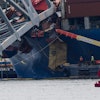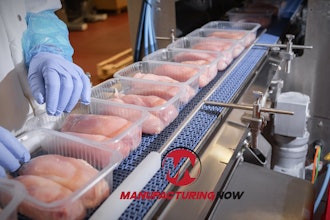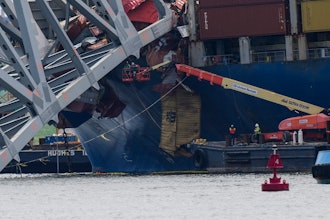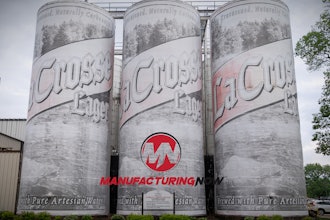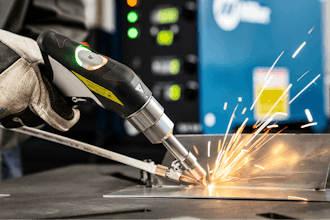This article originally appeared in the November/December print issue of IMPO.
It is easier to prevent bad habits than to break them,” Benjamin Franklin once said.
Each of us has personal habits we’d like to break — driving too fast, eating too much or, perhaps, watching too much TV. Many of us also have certain on-the-job habits we should stop, and this is especially true for people who work at heights.
Often, their bad habits result less from cutting corners or intentionally breaking rules, but from misconceptions about what the rules really say. A clear understanding of the standards and regulations governing fall protection can fade over time and be replaced by practices and beliefs acquired on the job.
When it comes to preventing falls, breaking bad habits and dispelling misconceptions can help reduce accidents and save lives.
A good starting place is the five most common misconceptions about fall protection.
1. The 6-Foot Rule
The 6-foot rule, also known as the two-step rule, is the myth that workers who stay 6 feet or more from an unprotected side or edge of a structure – such as a house under construction – don’t need fall protection. The apparent logic behind this misconception is that the berth between the worker and the fall hazard is wide enough to eliminate the risk of falling.
The fact is, physical space does not help prevent falls. Workers can unconsciously come too close to an unprotected edge in the course of their work day.
According to OSHA, “there is no ‘safe’ distance from an unprotected side or edge that would render fall protection unnecessary.” Further, the agency requires employers to provide fall protection – such as guardrails, safety nets or a personal fall-arrest system – anywhere employees are working at elevations of 4 feet in general industry and 6 feet in construction.
2. Five-Year Equipment Life
There’s a good reason for one of the most pervasive myths regarding fall protection: the service life of equipment is only five years.
From 2004 to 2012, the ANSI A10.32 construction standard included a guideline that fall-protection equipment used in construction applications be held to a five-year service life.
However, the standard was revised in 2012 and the five-year guidance was removed. Fall-protection equipment produced to the revised standard is no longer subject to mandated retirement dates. Product-service life instead should be determined through regular equipment inspections and adherence to the manufacturer’s instructions.
OSHA even requires – and equipment manufacturers advise – end users inspect equipment prior to each use. Every application, work exposure and job site is different, and a complete visual inspection of the equipment prior to each use will help determine if the product is suitable for use or must be removed from service.
A formal evaluation by a competent person should be done at least twice a year. Some products must also be returned to the manufacturer for a factory-authorized inspection, as ANSI Z359.14 stipulates for self-retracting devices.
3. Restraint vs. Positioning Systems
Some regard restraint systems and positioning systems as if they are interchangeable. They are not.
Knowing the difference can help employers choose the right system for the right application – and ensure it is configured in the proper manner – to better help protect workers from fall hazards.
A restraint system physically prevents workers from reaching a fall hazard, such as the edge of a roof. A restraint system typically consists of a body harness connected by a lanyard to an anchor point on an elevated worksite. Similar to a dog on a leash, the worker can only move as far as the tether allows — in this case, not too close to a fall hazard.
By contrast, a positioning device system is defined by OSHA as a body belt or body harness system rigged to support a worker aloft on an elevated vertical surface, such as a wall or pole.
Perhaps the most familiar image of someone using a personal positioning system is the utility lineman. After climbing up a wooden pole, the lineman positions himself to work with both hands free while leaning. That is achieved with the positioning system, which often consists of the lineman’s belt connected to a heavy-duty strap that wraps around the pole’s circumference. On the lineman’s boots, spurs with gaffs help support and stabilize the lineman as he works.
Unlike fall restraint systems – which are engineered to prevent any falls from elevations – OSHA regulations say positioning equipment, used in conjunction with an active fall arrest system, may permit a fall of up to 2 feet. Another major difference is the configuration of these systems. Because a positioning system must be capable of stopping the falling weight of a person, it needs to be anchored to absorb much more force than a restraint system.
4. Rely on Emergency Responders for Fall Rescue
In spite of all the regulations and recommendations regarding how to safeguard employees from fall hazards, there is limited guidance available on how a worker suspended in a fall-arrest system should be rescued.
OSHA states in 1926.502 (d)(20) that employers “shall provide for prompt rescue of employees in the event of a fall or shall assure that employees are able to rescue themselves.” But a “prompt” rescue is not defined.
When a fall occurs and a worker is safely suspended, the natural response is to call 911 and wait for emergency responders to arrive. But responders often lack the proper equipment or training to rescue a person suspended at height. This wait time for rescue can be highly dangerous, as the average time until the onset of the initial symptoms of suspension trauma is between five and twenty minutes.
Employers should be proactive and develop a comprehensive rescue plan. The plan should account for all potential rescue scenarios, and designate personnel to be responsible for conducting the rescue. Workers should also be educated on how to conduct a self-rescue, should it be necessary. The plan should ensure the proper training is provided, as well as specify the necessary equipment.
5. One Size Fits All
A common habit in the construction industry is the use of one fall-arrest system for multiple applications.
Various factors – such as the working height, working range and the anchor-point location – can affect the demands put on the fall-arrest system. These factors may require adjustments to the system’s configuration, or it may require a different system altogether. Regardless, even minor changes from site to site can make a one-size-fits-all approach potentially dangerous for workers.
Fall protection plans, which must be written and site specific per OSHA regulation, can be developed for repetitive use if they address all fall-protection issues at each site. This means that the plan “will have to be reviewed, and revised as necessary, on a site by site basis,” according to OSHA.
Working Toward Safer Outcomes
Employers may be frustrated with the additional burden of purchasing a wider range of fall-arrest systems or conducting additional planning and training, and employees may feel hampered by the additional time and effort spent configuring a system to the specific demands of each site. On the jobsite, time is precious and resources are often limited.
But changing bad habits, taking the necessary time, applying resource investments and planning proactively are needed to reduce the number of injuries and deaths to workers caused by falls.
Mike Cameron is a Technical Specialist with 3M, a manufacturer of Fall Protection equipment. As a leader in safety for more than 40 years, 3M offers site evaluations, training, and education and is ANSI, OSHA and CSA certified. For more information, contact 3M at 800-328-1667 or visit www.3M.com/FallProtection

